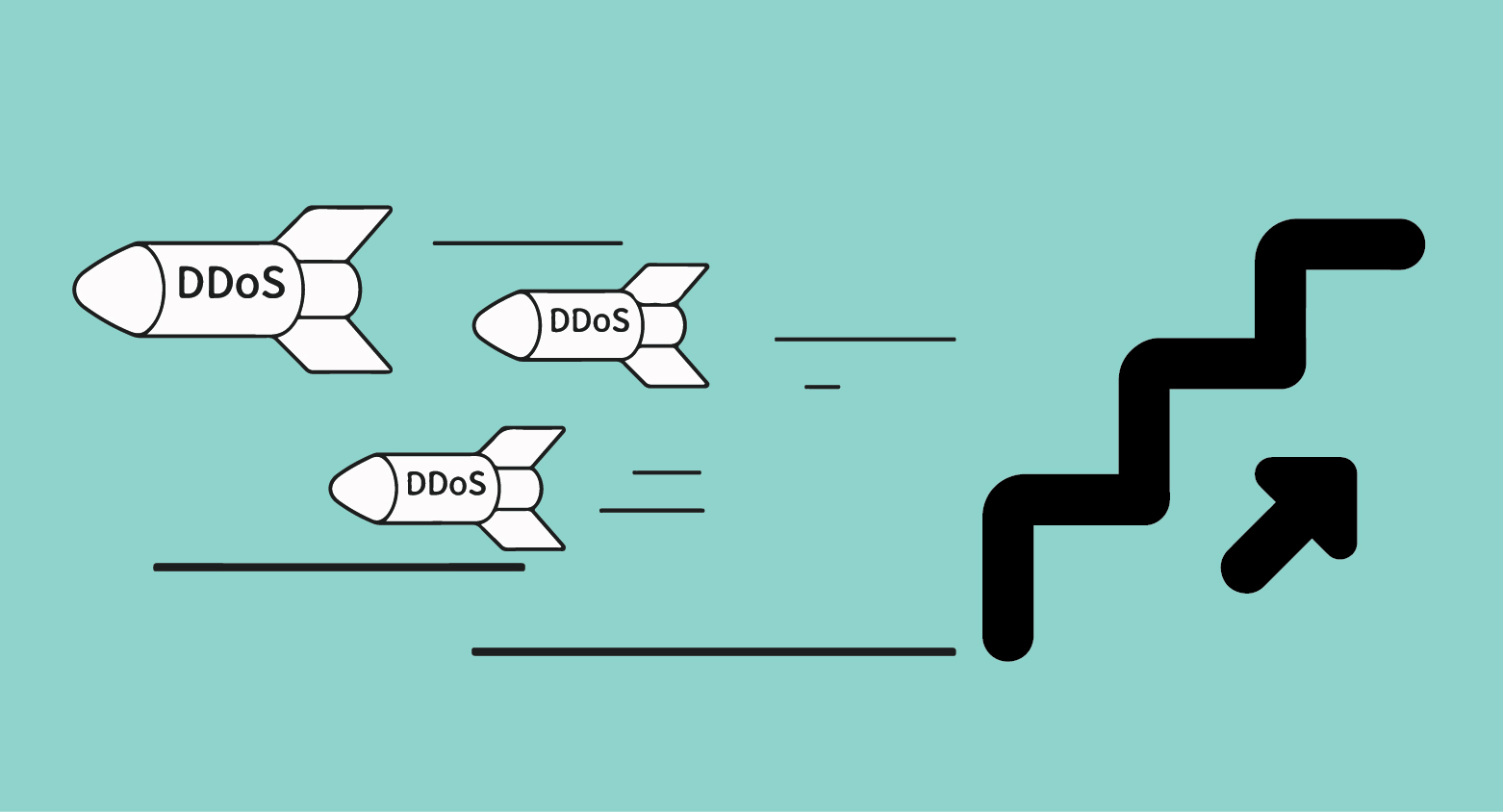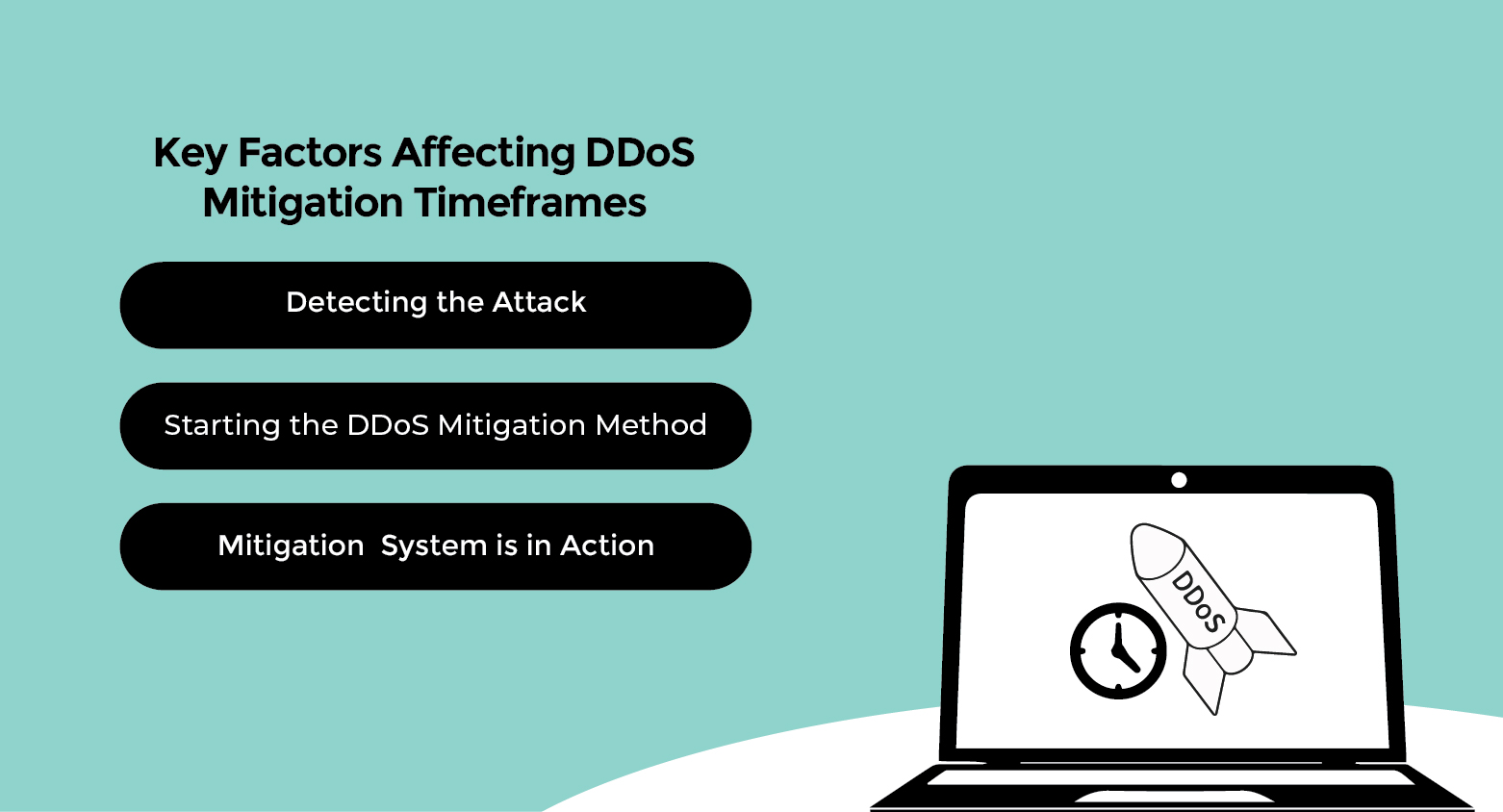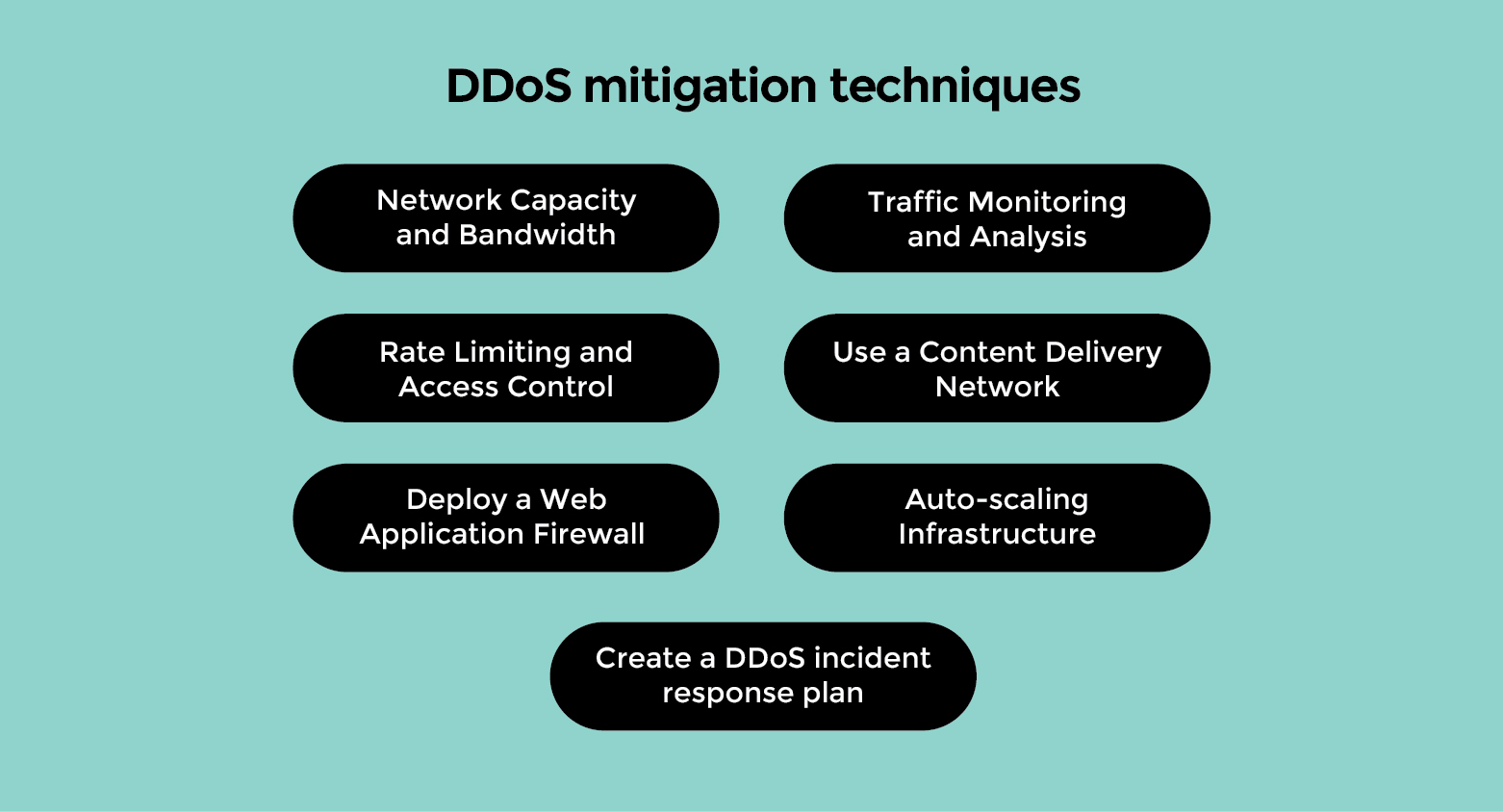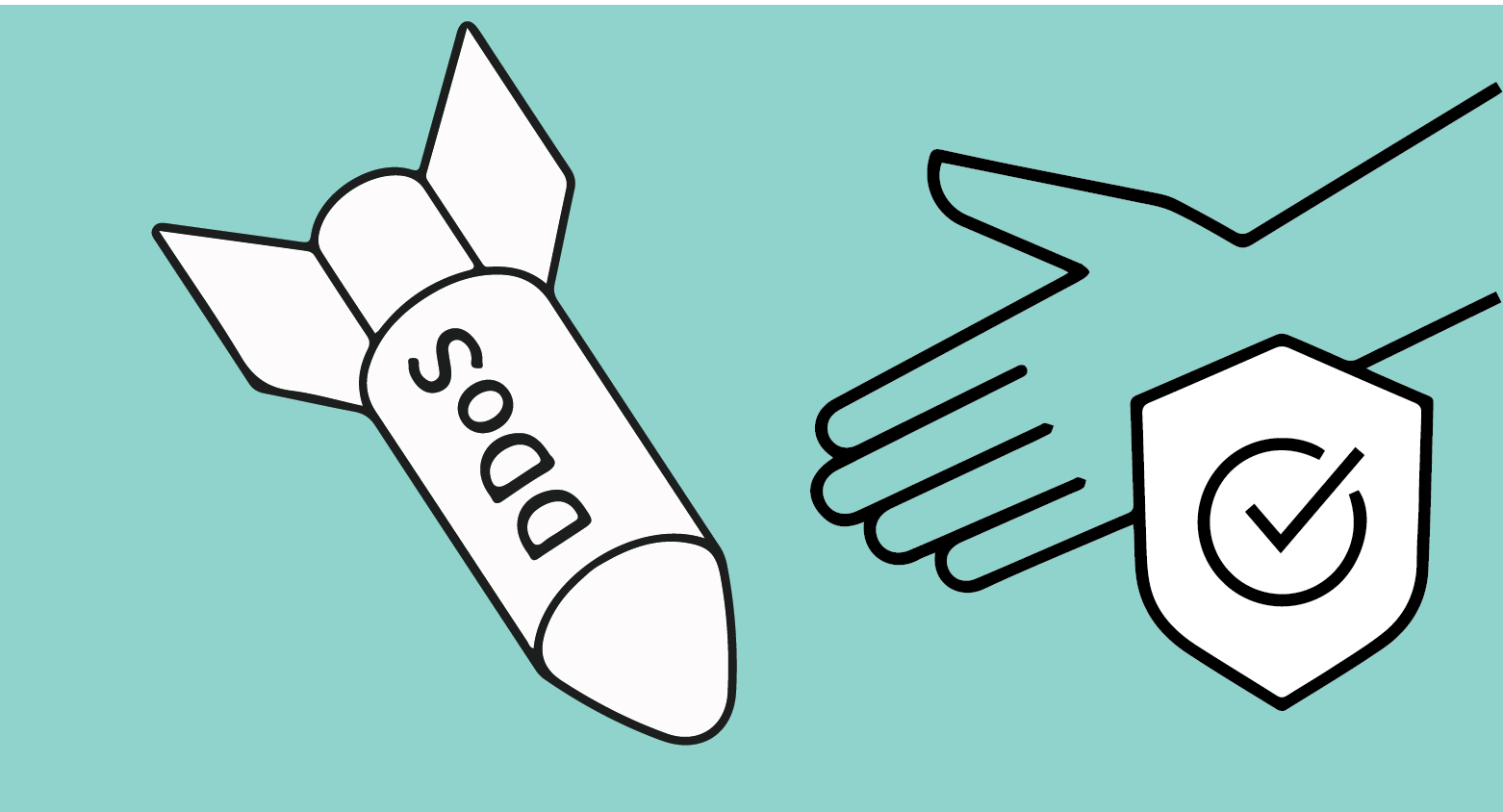DDoS attacks are lethal as they can completely ruin your financial systems by hacking sensitive information. This results in huge financial losses, which an organization struggles even to recoup. Owing to DDoS attacks, Meta has suffered the loss of $100 million, emphasizing the need to take action against DDoS attacks.
This guide will help you about DDoS mitigation techniques that can be taken to mitigate DDoS attacks as well as strategies to reduce their impacts.
DDoS Mitigation Stages
DDoS (distributed denial of service) mitigation techniques are spread across four phases. By adopting these sane strategies, organizations can avert any looming DDoS threats.

- Detection: The system identifies attack traffic and legitimate traffic. Since attacks can begin gradually and utilize allegedly legitimate IP addresses, the detection process might not be immediate.
- Response: Once the attack is detected, the organization responds firmly to counter the anomalies. It can be done by absorbing or diverting malicious traffic from the threat’s intended target. Often, the Domain Name System is used to carry out this response.
- Filtering: Filtering refers to screening out legitimate patterns from bad traffic. For example, the IT department can mark what traffic to block by identifying what users are accessing the impacted server.
- Analysis: To secure the system from future attacks, the attack must be analyzed. For this purpose, IT analysts must gather information regarding the attack through system analytics.
Key Factors Affecting DDoS Mitigation Timeframes
The time required for the best DDoS mitigation strategies is influenced by several factors: how long it takes to detect an attack, activate the mitigation system, and carry out the mitigation process. Hence, DDoS attack mitigation techniques depend on the following factors too:

1. Detecting the Attack
In detecting a DDoS attack, the system differentiates attack traffic from legitimate traffic. Because the attacks may start off slowly and use seemingly legitimate IP addresses, the detection phase may take some time.
2. Starting the DDoS Mitigation Method
DDoS mitigation stage involves keenly examining the security log to gain more information about DDoS attacks. With this information, it helps make the system adaptable by enabling it to avert more attacks in the future.
3. Mitigation System Is In Action
The effectiveness of the mitigation system depends heavily on its speed. Consequently, the team must thoroughly plan, including strategically coordinating the system’s automated features.
DDoS Mitigation Techniques
Averting DDoS lies in adopting multi-pronged DDoS attack mitigation techniques that ensure robust and strengthened defence against DDoS attacks:

1. Network Capacity and Bandwidth
It is important to ensure sufficient network capacity and bandwidth, as this helps absorb significant malicious traffic without affecting legitimate users. For this purpose, using network resources and a content delivery network are effective as they distribute traffic effectively.
2. Traffic Monitoring and Analysis
Continuous monitoring is essential as it helps in effectively tracing any sort of anomalies that may resemble DDoS attacks. It helps in controlling the attack at the first stage. In this context, employing the best techniques for DDoS attack prevention systems helps in locking out malicious attacks before they access sensitive information.
3. Rate Limiting and Access Control
Rate limiting is considered an optimal solution to restricting a number of requests from specific IP addresses within a limited timeframe. To enhance the effectiveness of the mitigation plan, it is best to utilize an access control list, as it filters traffic by blocking malicious factors from reaching the system. Hence, legitimate users are allowed to access websites.
4. Use a Content Delivery Network
CDNs place your site on worldwide servers, soaking up and filtering traffic near the point of origin. During an attack, only the CDN is exposed while the master server remains secure. CDNs tend to be the initial defensive measure.
5. Deploy a Web Application Firewall
A WAF blocks and scans incoming traffic. It prevents malicious requests from reaching your app. Most WAFs include protection against DDoS attacks. They're particularly effective against application-layer attacks. WAFs complement CDNs nicely for stacked security.
6. Auto-Scaling Infrastructure
Cloud platforms can scale your resources automatically. When traffic is high, additional servers spin up, eliminating slowdowns or crashes under attack. Auto-scaling cannot prevent the attack, but it manages the load, giving additional time for other defenses to take effect.
7. Create a DDoS Attack Response Plan
Ensure a proactive response by having a well-defined plan with key contacts and action steps in place before an attack occurs. Clear communication with users is most important during outages. Drills can make your team response-ready.
Protection Against DDoS Attacks
DDoS attacks can take an organization’s system down, causing significant damage. There are multiple DDoS mitigation techniques that can be employed. It depends on key factors, listed below:

- Early detection: Early detection is the preventive way to avoid the impact of DDoS attacks. The early detection phase is important in both the mitigation techniques for DDoS as well as reducing impact.
- Cloud-Based DDoS Protection Services: Cloud-based DDoS protection services, such as AWS Shield and Akamai are designed to process enormous amounts of malicious traffic. These services redirect incoming traffic through their worldwide networks and send clean requests to your server.
- Deploy Intelligent Traffic Filtering and Rate Limiting: Another effective way to minimize DDoS attacks is to employ firewalls and web application firewall systems, as they help in filtering out malicious attacks. Also, rate limiting limits the quantity of requests an individual can make within a specific time frame, thereby lessening the potential of your resources being overloaded.
FAQ’s
What Is a DDoS Attack, and How Does It Work?
A DDoS attack overwhelms a target, such as a website, server, or network, with massive traffic from multiple sources, making it slow or unavailable to legitimate users. Attackers often use botnets (a network of infected devices) to generate this traffic.
How Can I Tell If I'm under a Ddos Attack?
Signs include sudden spikes in traffic, slow website performance, frequent crashes, or complete downtime. Real-time monitoring tools and intrusion detection systems can help identify unusual traffic patterns that may indicate an attack.
Can DDoS Attacks Target Small Businesses?
Absolutely. DDoS attacks aren’t just aimed at large corporations; even small and medium-sized businesses are also frequent targets, especially if they lack proper security measures. Often, attackers see smaller businesses as easier to exploit.
All in all, DDoS mitigation techniques are necessary as they can cause significant damage to your system. DDoS mitigation methods require holistic strategies that effectively curb the occurrence of such attacks in the future.
The pre- and post-strategies, discussed above, are crucial in safeguarding your system against DDoS attacks. Besides, leveraging the best AI security tools, such DDoS attacks, can be controlled as AI algorithms learn the pattern and alert when any changes occur in the system. Also, using best Ad Blockers for Mac, DDoS attacks can be minimized.
Stay tuned to Virtual Codes Vault for insights on leveraging advanced software to create a secure digital environment.

